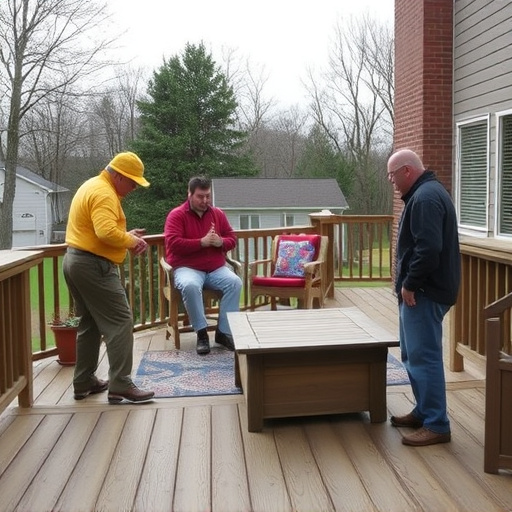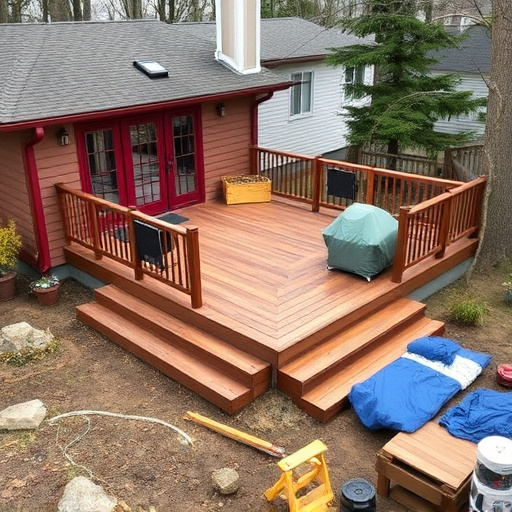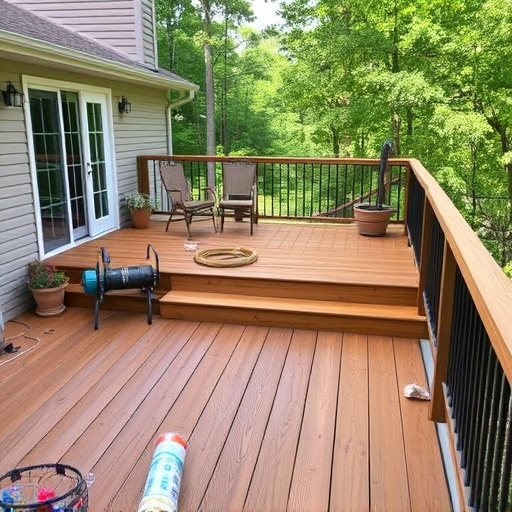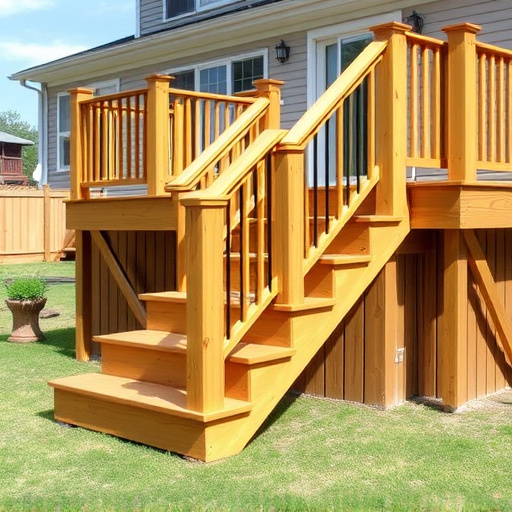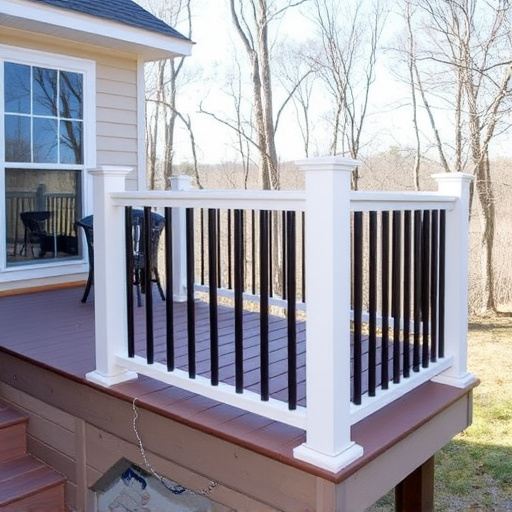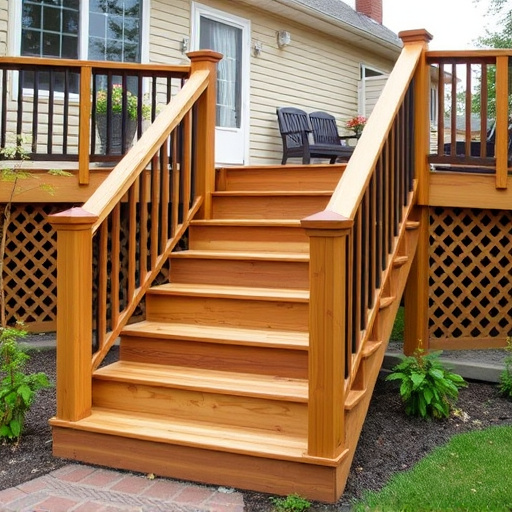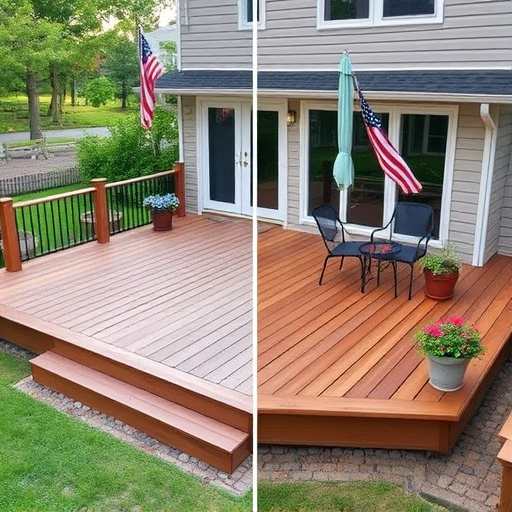Deck builders must prioritize slip resistance during installation to ensure safety and durability, adhering to building codes and industry standards that dictate specific requirements for high-traffic decks or slippery conditions. Selecting natural materials like textured wood or composite decks provides better grip, and local environmental factors should guide material decisions for long-term resilience. Expert techniques include using textured planks, proper surface preparation, secure fastening, and adequate gap filling to create robust, safe walking surfaces, minimizing accident risks.
“Enhance your outdoor living space with a slip-resistant decking installation, ensuring safe and secure foot traffic. This comprehensive guide caters to both homeowners and deck builders seeking expert advice. We delve into understanding crucial slip resistance requirements, selecting materials for superior traction, and mastering installation techniques. By following best practices, you can create robust walking surfaces that withstand the elements and reduce the risk of accidents. Elevate your decking project with these essential tips from top deck builders.”
- Understanding Slip Resistance Requirements for Decks
- Choosing the Right Materials for Enhanced Traction
- Expert Installation Techniques for Safe Walking Surfaces
Understanding Slip Resistance Requirements for Decks
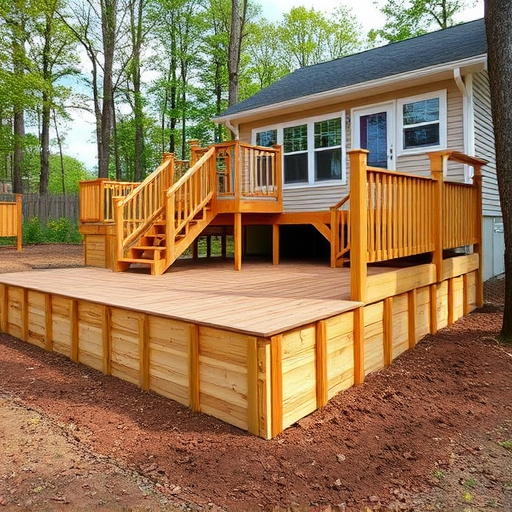
When it comes to deck installation, slip resistance is a critical safety consideration that cannot be overlooked. Deck builders must understand the specific requirements for slip resistance, as defined by building codes and industry standards, to ensure safe and durable structures. These regulations are in place to mitigate the risk of accidents, especially on high-traffic decks or those with exposure to slippery conditions like rain or snow.
Homeowners and deck builders alike should be aware that slip resistance is not just about a smooth surface but rather about creating a decking system that provides adequate traction under various circumstances. This often involves selecting appropriate decking materials and finishes that offer superior grip, especially in wet conditions. By adhering to these best practices, deck builders can deliver safe, long-lasting installations, enhancing outdoor living spaces while meeting or exceeding local building codes and ensuring customer satisfaction with home service solutions like roof consulting and siding replacement.
Choosing the Right Materials for Enhanced Traction
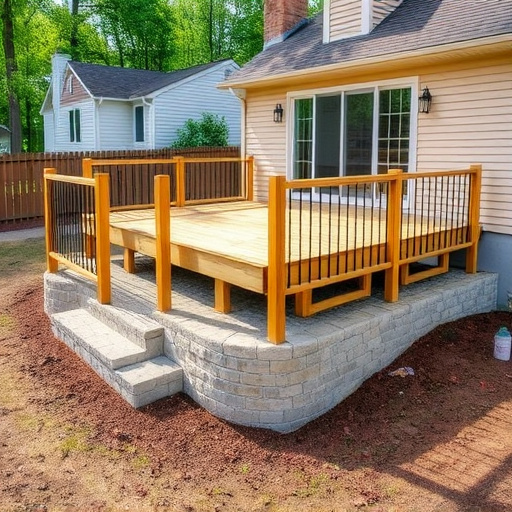
When it comes to slip-resistant decking, selecting the right materials is a deck builder’s secret weapon. The goal is to choose a surface that offers superior traction, ensuring safe navigation for all users, especially in wet or slippery conditions. Natural materials like wood with a rough finish or composite decking with textured surfaces are excellent choices. These options provide better grip compared to smooth decks, significantly reducing the risk of accidents.
Deck builders should consider the environmental factors their location presents. For regions with frequent storms and moisture, choosing durable materials that resist slipping in wet environments is crucial. This might include specialized anti-slip coatings or treatments that enhance traction without compromising aesthetics. Remember, a slip-resistant deck isn’t just about safety; it’s also about ensuring long-lasting resilience against elements commonly associated with roof replacement or siding installation projects.
Expert Installation Techniques for Safe Walking Surfaces
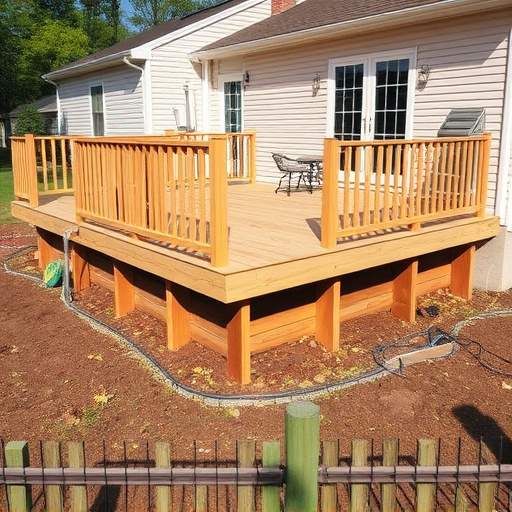
When it comes to creating safe walking surfaces, especially on decks, expert installation techniques are paramount. Deck builders should adhere to stringent safety standards to ensure robust and slip-resistant decking. This involves selecting appropriate materials designed for traction, such as textured or grooved planks, and properly preparing the underlying surface to prevent moisture accumulation that can lead to slippery conditions.
Proper installation methods, including fastening decks securely to their framework and ensuring adequate gap filling around nails or screws, further enhances traction. Additionally, incorporating non-slip coatings or treatments can significantly reduce the risk of accidents. For commercial siding and roofing projects, where deck installations may be more complex, it’s crucial to engage experienced professionals who understand not just slip-resistant techniques but also the intricacies of siding repairs and the importance of a well-integrated, safe walking surface as part of a comprehensive building envelope solution.
When it comes to deck installation, prioritizing slip resistance is non-negotiable for any reputable deck builders. By understanding local regulations, selecting appropriate materials, and mastering expert installation techniques, you can create safe walking surfaces that are both functional and compliant. Invest in the best practices outlined here, and your clients will enjoy a comfortable, secure deck for years to come.








